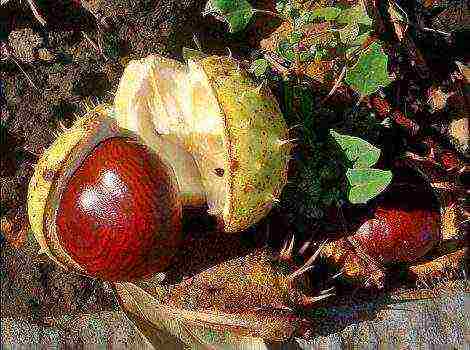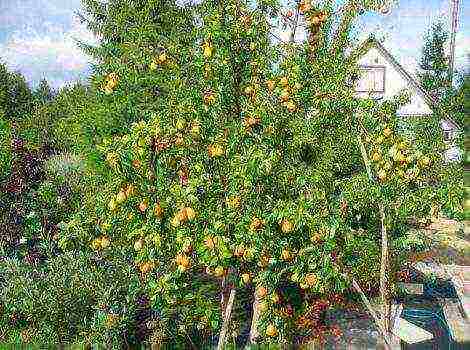Content
Aphids (aphids) are the most common pests of horticultural crops. Fighting aphids on fruit trees is a whole range of agrotechnical measures, including compliance with farming rules, prevention and destruction of insect colonies.
Pest control is an important task for all gardeners and must be done systematically and correctly.
Many species of the aphid superfamily pose a threat to fruit crops. The mass spread of the pest is initially facilitated by the small size of the insect up to 7 mm and often gardeners notice damage to the tree only after the colony has grown.
The peculiarity of aphids is the ability to migrate. Winged individuals can travel long distances in search of a more comfortable place. The main reasons for migration are overpopulation or deterrence factors (pesticide treatment).
And they take it from plants, mainly from young buds and leaves, piercing the tissue of trees with a thin proboscis.
Stable absorption of amino acids and trace elements from wood leads to its depletion. Development processes stop at the sites of numerous punctures. Outwardly, this can be seen by the signs:
- curling and darkening of the tops of the leaves;
- premature fall of green mass;
- deformation of shoots;
- painful growths on the trunk;
- darkening, stopping development and dropping of buds.
The waste products of aphids pose a great threat to the fruit tree. Excess moisture and carbohydrates are excreted from the pest's body in the form of sugary secretions, which are called honeydew or honeydew.
In the leaf plates and stems covered with a sticky liquid, photosynthesis and respiration of the plant are disrupted. A favorable environment is created for the development of fungi, the spores of which are easily carried by the wind and can cause an epidemic in the garden. In addition, aphids are a carrier of viral diseases that provoke abnormal development of trees.
The defeat of a fruit tree by a pest leads to a loss of the quality and quantity of the crop, incorrect development and soreness in the future. There are frequent cases of death or long-term recovery of fruit trees as a result of the defeat of large colonies of aphids.
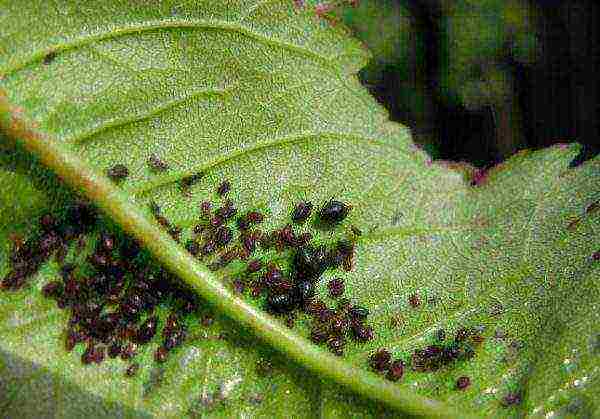
Preventive work
It is possible to avoid exhausting work to destroy the pest and preserve the health of fruit trees if you minimize the possibility of aphids appearing on the site in advance. To do this, it is necessary to create uncomfortable living conditions for insects, to make the garden area unattractive for aphids.
- Beneficial insects. Biological enemies of aphids: ladybugs, ground beetles, wasps and hover flies. They can be attracted to the garden plot by planting daisies, carrots, dill, calendula, parsley.
- Repellents... Plants containing phytoncides repel aphids with their specific odor. You can plant marigolds, basil, lavender, mint, coriander nearby fruit trees.
- Plants are neighbors. It is important to avoid the proximity of plants, the smell of which attracts the pest. These are: linden, viburnum, bird cherry, legumes. Ornamental plants: petunia, cleoma, mallow, nasturtium, poppy.Many gardeners plant these plants away from fruit trees, and in the fall they destroy the affected crops. This distracts the aphids from the protected plant.
Having flown to a new place, the pest lays eggs capable of wintering in the bark, under mulch, in the soil, in the rhizomes of the plant and dies. In the spring, with the appearance of the first heat, new individuals hatch from the eggs and begin to feed on young greens.
It is necessary to remove all the exfoliated bark of trees, change the layer of mulch, dig up the trunk circle, cover up the cracks and whitewash the stem. So for the eggs of the pest, there is practically no way to survive the winter.
If there is no preventive work or a particularly favorable season is created for the development of large aphid colonies, damage to fruit trees is difficult to avoid. In this case, it is important to prevent an increase in the number of pests and minimize damage to the fruit tree.
Aphid control without chemicals
Chemicals are very effective but have many side effects on human and pets health. Therefore, many gardeners use them only as a last resort, with massive lesions of the garden area. An alternative replacement is to get rid of aphids on the drain with solutions from natural components that are harmless to the environment.
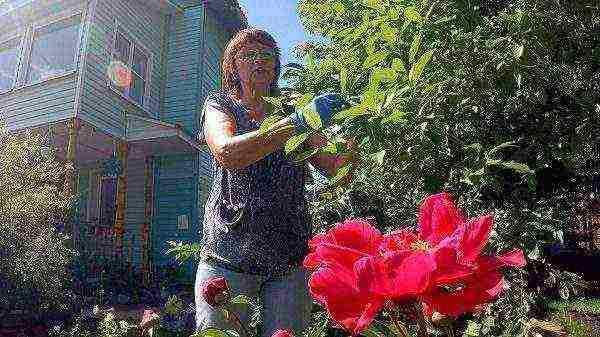
Ash and soap solution
The composition of the two components in the complex is the strongest toxin for aphids.
Solution preparation:
- ash (400 g) is sieved and poured with water (5 l);
- boil for 30 minutes;
- the solution is filtered and brought to a volume of 10 liters;
- add 50 g of laundry soap.
Additionally, this composition has protective and nourishing properties.
Birch tar
It is a dark oily liquid with a scent that repels aphids. Additionally, it is useful for the plant with antiseptic and antimicrobial properties.
Solution composition:
- tar 10 ml;
- laundry soap 50 g;
- water 10 l.
The trunk circle should also be processed. To prevent the reappearance of aphids, containers with birch tar are suspended in the crown of the tree. A birch tar insecticide will be effective in controlling a moderate number of pests.
You may also be interested in the following articles about fruit trees:
- How to plant a pear correctly?
- Diseases of apple trees and their treatment.
- Proper pear care and preparation for winter.
- Pear pruning scheme.
Herbal remedies
Many plants contain insecticidal components, which are most pronounced after infusion and heat treatment.
Infusions and decoctions:
- Garlic... Chopped vegetable (200 g) is poured with water (10 l) and infused for 24 hours.
- Onion. Vegetable husk (300 g) is infused in water (10 l) for 5 days.
- Pharmaceutical camomile. The aboveground part (1 kg) is poured with hot water (10 l) and infused for 12 hours. From the infusion, a solution is made with water 1: 1 with the addition of soap (40 g).
- Buttercup. Stems and leaves (1 kg) are poured with water (10 l) and infused for 2 days. Filter and add 40 g of soap.
- Tomato tops... Freshly chopped raw materials (4 kg) are placed in water (10 l). Insist for an hour and boil for 30 minutes. The broth is diluted with water 1: 1.
- Capsicum. Fresh vegetable (100 g) is poured with water (1 l) and cooked over low heat for 1 hour. The broth is infused for 2 days, the raw material is squeezed out and brought to a volume of 10 liters.
- Yarrow. Dry grass (1 kg) is poured with water until the raw material is completely covered. Steamed in a water bath for 30 minutes. After that, 10 liters of water are poured and insisted for 2 days.
Kitchen methods
Kitchen methods are methods that use available products. These products are characterized by quick preparation, harmlessness and relatively quick action:
- "Coca Cola". Lemonade contains phosphoric acid, a powerful toxin for aphids. For the procedure, a solution of "Coca-Cola" and water (5: 1) is used. The treatment with the product has a long-lasting effect.
- Vodka. Spray with a clean product, and liquid soap can be added for better adhesion.
- Sunflower oil. The product (200 ml) is dissolved in water (10 L).
- Tobacco smoke. For fumigation, you need to place a heap of straw or manure near the trees, scatter tobacco over the surface and set it on fire. The procedure lasts 2 hours and is performed 2 times with an interval of two weeks.
Kitchen methods are economical for small trees and shrubs or for partial treatment of the most affected areas.
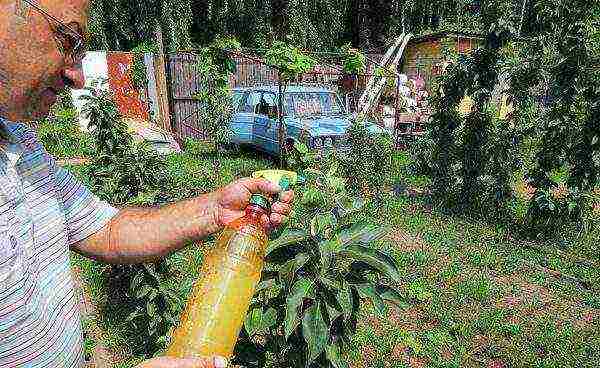
Chemicals
Many gardeners try not to use chemicals in their garden. Nevertheless, in case of mass infestation by pests, this cannot be avoided.
According to the method of penetration and the nature of the action, insecticides are divided into three types:
- Contact. They penetrate the pest's body through the skin upon contact with any part of the body. Most preferred for the control of aphids and other piercing-sucking pests. The main drugs: Karbofos, Fury, Fufannon.
- Intestinal. Cause poisoning if it enters the intestines with food. It is advisable to use if gnawing pests have settled on the tree along with aphids. Popular means: "Actellik", "Confidor", "Bankol".
- Systemic. They penetrate into plant tissues and are kept there for up to 30 days. With constant contact, they cause the death of insects living in the crown. In addition, toxic substances enter the body of pests through food. They differ in relative harmlessness to humans. Effective drugs: Tanrek, Prestige, Biotlin, Aktara.
A good option for certain cases is the combined preparation "Nitrofen". It is a complex action agent that is effective against pests, fungal diseases and weeds.
Terms and rules for processing
Each treatment for the season pursues its own goals, and they need to be carried out based on the individual situation.
Spring processing of fruit trees
Early spring processing is carried out before bud break. During this procedure, it is necessary to spray the tree with an ash and soap solution. In case of severe damage to the tree, the ash in the solution is replaced by 80 g of kerosene.
The second treatment is carried out at the beginning of bud break. The purpose of the procedure is the destruction of young individuals hatched from winter eggs. This measure is very important and prevents the growth of the colony to a large-scale size, feature of aphids - high reproductive capacity.
With a large number of pests, treatment is carried out with contact or systemic drugs. If the number of insects does not cause concern, you can do with folk remedies, the consumption of which is 10 liters per average tree.
The third treatment is carried out in the absence of effect after previous procedures or when they are missed. It is especially important when the number of aphids is out of control. It is carried out twice in the phase of opening the buds and after 75% of the petals fall off.The choice of product depends on the number of insects. The next procedure is carried out after flowering, and only if pests are observed on the tree.
Aphids quickly acquire resistance to the active substances of drugs, so they must be combined. It is important to ensure that there is a period of 30 days between the processing and harvesting period, before and after the process. In parallel with these activities, it is necessary to fumigate fruit trees.

Autumn treatment against aphids
In the autumn, it is necessary to take preventive measures: remove the old bark and moss from the trunk. Prune old and damaged branches. The trunk circle is cleaned of fallen leaves, and if the tree is affected by pests and diseases, it is burned.
Autumn processing is carried out in October or November at temperatures above -5 ° C. A 5% urea solution (500 g / 10 l) is well suited for this procedure. Additionally, this will protect the tree from scab development.
How to process plums and fruit trees
The gardener's task is to get the insecticidal solution directly on the aphid colonies. This can be difficult when the leaves are curled a lot. In some cases, it is much better to simply rinse the tops of the shoots with a solution.
Good spraying quality is:
- procedures performed in the morning or evening hours, when there is no dew;
- processing in calm and cloudy weather, at high temperatures, the effect of drugs is reduced;
- no precipitation, the drug must remain on the surface of the tree for at least 3 hours;
- work with a high-quality spray, which is kept at a distance of 70 cm;
- covering the entire crown of the tree, you need to use a stepladder.
It is important to protect the skin and mucous membranes from the ingress of toxins and carry out processing only in protective clothing.
A fruit garden is a small ecosystem and how it will develop depends only on the gardener. Peaceful coexistence of pests and fruit crops is possible with constant control over the number of harmful insects. To do this, you do not need to violate the rules of agriculture, it is important to remove plant waste in a timely manner and create favorable conditions for beneficial insects.
And finally, a short video on how to deal with aphids on fruit trees:

